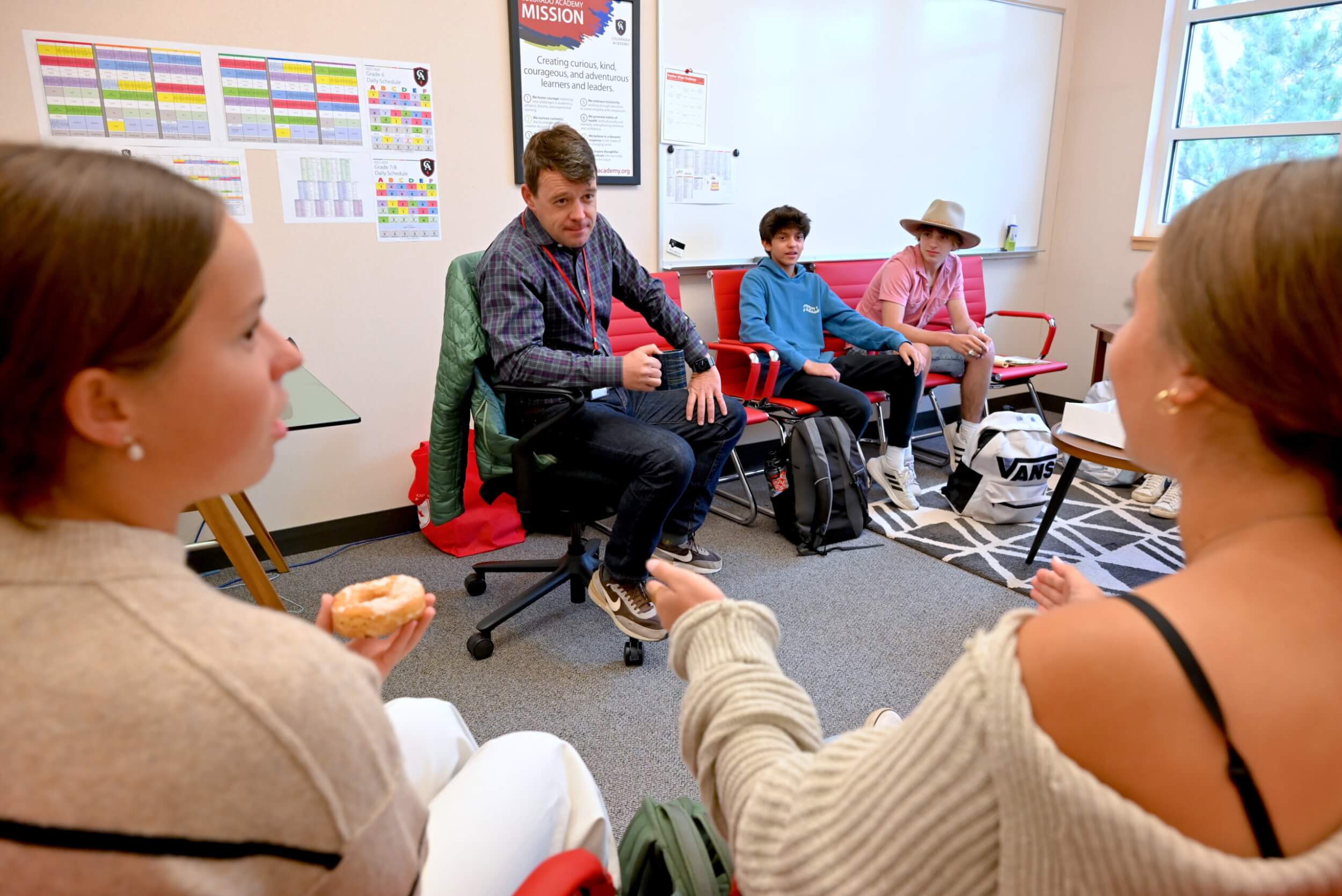If you had a chance to attend one of our grade-level coffees this fall, you heard how complicated it can be for a Middle Schooler to feel like they belong. In these years, we grow uniquely self-conscious as we gain a more acute awareness of those around us. Since schools group students by age, the self-conscious are surrounded by the self-conscious, leading to the uncomfortable feelings many of us remember about our own middle school years. As friend groups naturally break apart and reform, the internal narrative at this age is often: What do others think of me? Do I belong? Because of this, our Middle School teachers know they need to take every opportunity to help students build connections and seek the security that comes from knowing people in their lives support them.
How does CA do this? By providing opportunity upon opportunity to explore and connect. Our arts programs allow kids to develop skills while being intermixed with students who share an interest in ceramics, photography, or music. Our athletics program requires that each student be a part of a team where they learn to support each other when there are stakes of winning and losing (even in our non-competitive leagues!). If you ever question the benefit of athletics in schools, I encourage you to attend a volleyball game, where kids cheer and console each other through every game action, or watch a team of soccer or field hockey players support a classmate when a ref makes a call that doesn’t go their way.
In the Middle School proper, we have long sent our students on multi-day outdoor experiences, challenging them to find connection with each other in discomfort. We’ve offered Middle School Socials, like the one last Friday evening, and Town Halls as places to build community. This year, our Student Action Committee, led by Mr. Augustin and Mr. Ramirez, launched the Middle School Herds program: cross-grade groups similar to Lower School Families, where 6th, 7th, and 8th Graders combine to connect through games and activities every few weeks. Our revamped clubs program offers the chance to gather by interest group during Friday study hall to write the Middle School Newspaper with Ms. Wall or work through logic puzzles with Ms. Zolla. Ms. Bronston and Ms. Marzonie now open the library during break times so kids can gather on the couches and around the tables to talk, do puzzles, and play games.
All of these activities work collectively to help students combat self-consciousness and develop a network of support. When a student receives a poor grade on a test, instead of looking up in fear to see who is judging them, we hope that student looks up to see the classmate they struggled up a mountain with, the classmate they made music with, the person they stood with as they lost a heartbreaker game to our cross-town rival, and know that instead of being judged, they will be understood.
Of course, things often don’t work out as we intend. Students still have bad days or even bad weeks. Despite our efforts, Middle Schoolers still experience self-consciousness, even when they have succeeded at building a supportive group of peers. When those weeks occur, at the very least, they know that when they reach Friday morning, I will be playing music in the halls, Ms. Sisneros will have a surprise for them at the front desk, and Mr. Govea will have a treat for them in the safety office.
This Friday and Saturday night, our Middle Schoolers will be performing The Brothers Grimm Spectaculathon!, and I encourage you to go (7 p.m. at the Leach Center for the Performing Arts). I am sure we will all be delighted with the tales and the skill of our actors. What will be less visible will be the camaraderie of the 18 students who worked in our Theater Tech class learning to use power tools to construct the sets, and the hours of script reading among the actors as students flubbed the same line 15 times, only to finally get it right to the cheers of their peers. We will never be able to fully dispel the self-consciousness of a Middle Schooler; however, through intentional support, love, and opportunity, we can help our students learn they are not alone.
